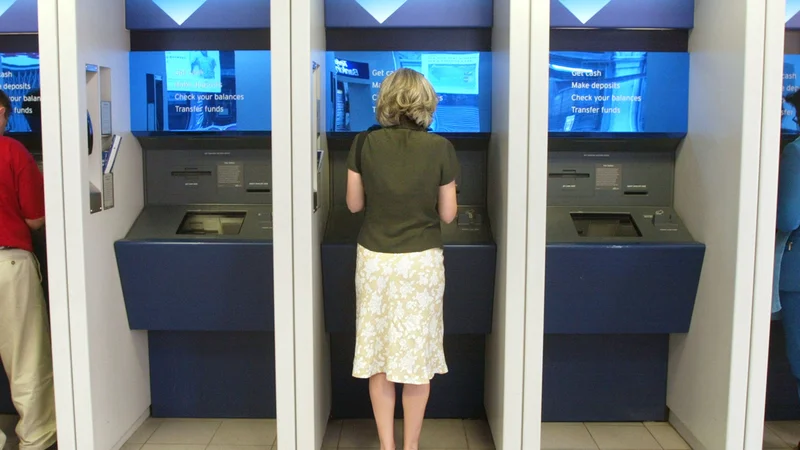Generated Title: A Scheduled Shutdown: Analyzing the Real Impact of the October Bank Holiday
*
On October 13, 2025, the glass doors of Wells Fargo and Bank of America branches across the country will be locked. The lights will be off. This is not the result of a sudden crisis or a system failure; it is a planned, meticulously scheduled pause in observance of Columbus Day, a federal holiday.
At first glance, the coordinated closure of a nation’s financial arteries, including other giants like Capital One and Citibank, sounds significant. It feels like an artifact from a different era—a time when the flow of capital was dictated by banker's hours and the physical transport of paper.
But we are no longer in that era. The core question for any rational analysis is not that the banks are closing, but what the quantifiable impact of this temporary physical closure is in an economy that now operates largely in the digital realm. The data suggests the answer is, for most of the population, functionally zero. And that discrepancy is where the real story lies.
The Anatomy of a Non-Event
Let’s be precise about the operational parameters. The closure on October 13th is for in-person, branch-based services. The digital infrastructure—the network of ATMs, mobile banking apps, and online portals that handles the overwhelming majority of consumer transactions—will remain fully operational. Wells Fargo has been explicit that its ATMs will continue to process withdrawals, deposits, and transfers, even accepting contactless payments from digital wallets like Apple Pay and Google Pay.
This makes the one-day closure less of a system-wide shutdown and more like a scheduled maintenance window for a legacy platform. It’s analogous to the post office closing for a federal holiday; mail won’t be delivered, but the internet doesn’t turn off. Email, instant messaging, and the entire digital communication network function without interruption. The disruption is only felt by those who are solely reliant on the physical channel.
This brings up a critical question for which the banks provide no public data: what percentage of daily banking transactions still requires a human teller behind a plexiglass window? While the exact figures are proprietary, every available trend indicates this is a small and shrinking fraction of the whole, concentrated in specific demographics and complex transactional needs (like certain business deposits or loan originations). For the average customer, the bank branch is already an abstraction, a place they might visit a few times a year, if at all.

This makes the decision by competitors like Chase Bank and TD Bank to remain open an interesting outlier. Is this a calculated move to capture a sliver of inconvenienced customers, thereby gaining a marginal competitive advantage? Or is it a costly marketing gesture, an operational headache undertaken to project an image of superior customer service? Without seeing their internal cost-benefit analysis, it’s impossible to say.
A Legacy System in a Digital World
The persistence of the bank holiday is a fascinating case study in institutional inertia. The holiday was established in 1968, a time when the entire financial system was profoundly physical. A bank's closure then meant a hard stop on the movement of money. Today, the observance feels more like a ritual. It’s a ghost in the machine, a protocol from a bygone era running on a system that has been almost entirely rebuilt around it.
It's useful to contrast this scheduled, low-impact event with a genuine systemic disruption. When `American Airlines cancels flights` en masse due to a software glitch or severe weather, the result is a chaotic, cascading failure with immediate and widespread consequences. Travelers are stranded, supply chains are disrupted, and the economic fallout is tangible. The public reaction to the bank holiday, by contrast, is typically a collective shrug. I've analyzed market reactions to dozens of system outages, and the market prices in zero disruption from these holidays because, for the vast majority of the digital economy, there is none.
The entire federal apparatus grinds to a halt on these days—courts, post offices, and public schools included. The U.S. observes 11 official federal holidays each year (to be more exact, 11 on average, as some are date-specific while others fall on a given Monday), and this one is arguably the most operationally complex given its direct tie to the banking sector. The holiday itself is also a point of social contention (many states and cities now recognize the date as Indigenous Peoples' Day), which adds a political dimension to what is, for the banks, a purely logistical calculation.
But the most important question isn't about the locked doors of the branches. It’s about the deeper financial plumbing. If the Federal Reserve's settlement systems, like Fedwire or the Automated Clearing House (ACH), also pause or operate on a delayed schedule, what is the hidden cost? Does a one-day delay in processing large-scale transfers create a silent liquidity crunch for small businesses that depend on precise cash flow timing? That is the real potential impact, and it’s one that occurs entirely out of public view.
A System Reboot We Barely Notice
Ultimately, the closure of Wells Fargo and Bank of America for a day is a solution to a problem that no longer exists for most people. It’s a legacy feature, not a bug, but one whose relevance has been almost entirely eroded by technological progress.
The fact that we still publish articles advising customers to "plan ahead" is perhaps the most telling detail of all. It speaks to our slow, collective adjustment to a world where the financial system is both a physical, nine-to-five institution and a placeless, 24/7 digital utility.
The closure isn’t the story. The profound lack of impact is. This scheduled shutdown serves as a quiet, annual stress test that proves just how far we've moved beyond the brick-and-mortar cage that once defined banking. The real risk to our money is no longer a locked door on a public holiday; it's the far more abstract and consequential threat of a failure in the digital systems we now depend on for everything.









